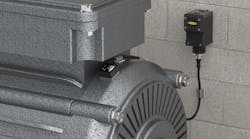What to Look for in a Condition Monitoring System
Predictive maintenance is becoming essential to the smart factory. The ability to accurately track machine performance and anticipate failures before they occur is helping manufacturers improve overall equipment effectiveness and reduce wasted time and costs.
A leading solution for predictive maintenance is condition monitoring; however, collecting machine performance metrics is only the beginning. The ability to accurately interpret and communicate this data is essential for system reliability, and that’s where machine learning comes into play. A condition monitoring solution with machine learning removes human error from the equation and makes predictive maintenance solutions smarter and more effective.
This article explains what predictive maintenance is, how condition monitoring with machine learning works, and 5 capabilities to look for in a condition monitoring solution.
What is Predictive Maintenance?
Predictive maintenance is the process of tracking the performance of crucial machine components, such as motors, to minimize downtime needed for repairs. Predictive maintenance enables users to more accurately anticipate when machine maintenance will be needed based on real-time data from the machines themselves. Because of this, predictive maintenance can help reduce machine downtime, increase the mean time between failure (MTBF), and reduce costs of unnecessary machine maintenance and spare parts inventory.
Traditionally, plant managers relied on preventative maintenance schedules provided by a machine’s manufacturer, including regularly replacing machine components based on a suggested timeline. However, these timelines are only estimates of when the machine will require service, and the actual use of the machine can greatly affect the reliability of these estimates. On one hand, this means that you could be paying for unnecessary maintenance plans and replacement parts that aren’t needed. On the other hand, many things can go wrong between scheduled maintenance visits.
For example, if bearings wear prematurely or a motor overheats, a machine may require service sooner than anticipated. Furthermore, if a problem goes undetected for too long, the issue could escalate to further damage the machine and lead to costly unplanned downtime. Predictive maintenance helps avoid these problems, saving time and costs.
Condition Monitoring With Machine Learning
Condition monitoring plays a key role in predictive maintenance by allowing users to identify critical changes in machine performance. One important condition to monitor is vibration. Machine vibration is often caused by imbalanced, misaligned, loose, or worn parts. As vibration increases, so can damage to the machine. By monitoring motors, pumps, compressors, fans, blowers, and gearboxes for increases in vibration, problems can be detected before they become severe and result in unplanned downtime.
Vibration sensors typically measure RMS velocity, which provides the most uniform measurement of vibration over a wide range of machine frequencies and is indicative of overall machine health. Another key data point is temperature change (i.e. overheating). Machine learning takes this information and automatically defines a machine’s baseline conditions and sets thresholds for acute and chronic conditions, so you know in advance—and with confidence—when your machine will require maintenance.
5 Key Capabilities of a Smart Predictive Maintenance Solution
Machine learning is just one important element that creates a smart condition monitoring solution. The following are the top 5 capabilities to look for in a predictive maintenance solution:
1. Continuous Monitoring
The most effective predictive maintenance solutions will continuously monitor machines for critical changes, including changes in RMS velocity, high-frequency RMS acceleration, and temperature. Changes in these conditions are leading indicators of future failure, and a continuous monitoring solution will pick up on these changes in real time and allow for timely action.
2. Machine learning
After mounting the vibration sensor onto your machine, most sensors require you to collect enough data to establish a baseline for the machine. Machine learning removes the chances of human error by automating data analysis. A condition monitoring solution with machine learning will recognize the machine’s unique baseline of vibration and temperature levels and automatically set warning and alert thresholds at the appropriate points. This makes the condition monitoring system more reliable and less dependent on error-prone manual calculations.
3. Wireless Communication
A wireless condition monitoring solution is easy to deploy quickly, and it can be adapted as your needs change without requiring extensive downtime for cable runs. In addition, the ability to monitor machines in inconvenient locations allows for more comprehensive monitoring and increased reliability throughout your facility.
4. Local and Remote Indication
When a vibration or temperature threshold has been exceeded, a smart condition monitoring system should provide both local and remote indications, such as sending a signal to a tower light in a central location or sending an email or text alert. This will ensure that warnings are addressed quickly regardless of whether the machine is within the sightlines of an operator.
5. Data Logging
A condition monitoring solution that allows you to log the collected data over time enables even more optimization. With a wireless system, vibration and temperature data can be sent to a wireless controller or PLC for more in-depth, long-term analysis.
Monitoring vibration and temperature using machine learning improves reliability, reduces unplanned downtime, and saves maintenance costs. It is also an easy way to start making better, data-driven decisions about your machines and transforming your facility into a smart factory.










